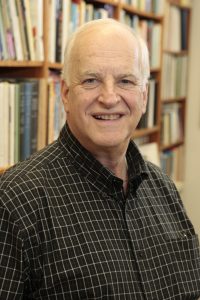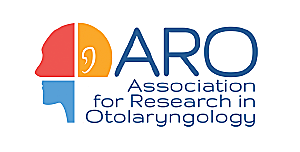Peter M. Narins, PhD

Internationally renowned for his elegant research and eloquent lectures, Peter Narins has been selected for the 2019 ARO Award of Merit for his significant impact on the field of auditory neuroscience. Peter received his B.S. and Master’s in Electrical Engineering from Cornell University. After volunteering for three years with the Peace Corps in Chile, he returned to Cornell to earn his Ph.D. in Neurobiology and Behavior under the supervision of Robert R. Capranica. He then moved to the University of Keele for a postdoctoral fellowship to learn mammalian auditory physiology with Edward F. Evans, and later returned to the United States to join the faculty at UCLA, where he rapidly rose through the ranks to become Distinguished Professor of Integrative Biology & Physiology and of Ecology & Evolutionary Biology. Peter’s numerous honors and awards include election to the rank of Fellow of the John Simon Guggenheim Foundation and four scientific societies -- the Acoustical Society of America, the Animal Behavior Society, the American Association for the Advancement of Science, and the International Society for Neuroethology. He has been named a Grass Fellow at Woods Hole, and has also been the recipient of a Senior Scientist Award from the Alexander von Humboldt Foundation and an Award from the Fulbright Scholar Program. Peter has also served the International Society for Neuroethology as Council Member, Treasurer, and President. He is an Honorary Member of the Cuban Zoological Society and Professor Ad Honorem at the University of the Republic, Montevideo, Uruguay.
At the cornerstone of Peter’s major scientific contributions is the application of principles from engineering to the study of hearing. Using anuran amphibians (frogs and toads) as his primary experimental model, he pioneered a research strategy that integrated an analysis of the mechanics and physiology of hearing in the well-controlled laboratory setting with elegantly-designed field experiments in the acoustically-messy and complex real world environments in which animals actually have to hear, listen, and act. By this approach, he showed definitively what was once considered to be a “simple” ear is actually quite complex and reveals many surprises. As just one example, Peter developed a method based on laser Doppler interferometry to measure the vibrations of the eardrum of the Puerto Rican coqui frog in response to ambient and self-generated sounds. This led to the discovery of the mechanism that prevents the inner ear from being overstimulated when the frog produces long, almost uninterrupted series of advertisement calls at intensities of more than 110 dB SPL. In a series of painstaking measurements, Peter discovered that sounds generated by the vocal cords, after being radiated from the vocal sac, impinge both on the inner and on the outer surfaces of the tympanic membrane. If the sounds arrive nearly in phase, then the tympanic membrane does not move much, even when stimulated with sounds of high intensity. To verify the idea that the frog’s ear acts as a pressure-gradient receiver, Peter then transported his laser vibrometer into the Puerto Rican rain forest, and in a truly arduous and elegant endeavor repeated the same delicate measurements in frogs engaged in natural chorusing behaviors. This series of experiments has stimulated similar research in reptiles and birds, and it is now believed that a pressure-gradient receiver represents the original rather than the derived design of the vertebrate ear.
Peter’s scientific efforts have produced a series of unique and surprising discoveries. Again using laser vibrometry, he was the first to show that the coqui frog can detect sounds, not only through its tympanic membrane, but also through its body walls (an extratympanic pathway). He was the first to provide neurophysiological evidence suggesting that the amphibian papilla in the frog’s inner ear may support a mechanical traveling wave on its tectorial membrane, an idea initially rejected because this animal lacks a basilar membrane with the usual tapered dimensions from base-to-apex. He was the first to quantify similarities and differences in phase-locking properties of amphibian and mammalian auditory nerve fibers, an important finding for understanding the evolution and operation of a time-coding mechanism in the inner ear. Peter and his team also demonstrated temperature-dependence of auditory nerve response properties and two-tone rate suppression in the frog. This work not only contributed to our understanding of auditory processing in vertebrates, but also stimulated another line of investigation, namely the contribution of stochastic resonance to stimulus detection. He took advantage of the observation that temperature affects noise in the nervous system to systematically measure auditory detection under experimentally controlled noise levels. This work offers the compelling insight that temperature (and noise) can affect information transfer in the anuran peripheral auditory system. Going back to the field, Peter showed that male white-lipped frogs use seismic “thumps” as well as advertisement calls to communicate within choruses. Following up this observation with electrophysiological experiments in a long and fruitful collaboration with Ted Lewis, he then demonstrated that the inner ears of these frogs are much more sensitive to seismic signals than expected from research with other terrestrial animals. In a parallel study of seismic communication with Ted, Dr. Narins demonstrated that the functionally blind Namib Desert golden mole uses seismic cues alone to locate food sources.
Peter designed and implemented electromechanical robotic models to demonstrate that a highly territorial South American dendrobatid frog uses a combination of acoustic cues (advertisement calls) and visual signals (vocal-sac pulsations) to evoke aggressive behavior. In a landmark field study, Peter and his students demonstrated that both the pitch and the timing of the calls of the Puerto Rican Coqui treefrog change in a similar fashion along an altitudinal gradient. By recording DPOAEs from frogs captured at different altitudes on a tropical mountain, they demonstrated that the call frequencies and auditory tuning are closely matched at all altitudes. Moreover, in a set of field experiments spanning a 23-year period, Peter and his team demonstrated that the spectral and temporal parameters of the calls of the Puerto Rican Coqui have shifted in the amount and direction consistent with the observed temperature rise in Puerto Rico over that same period. These results formed the basis of an argument that minute changes in frog calls over time can be used for monitoring global warming. And finally, he along with Albert Feng were the leaders of an international team of scientists that made the extraordinary discovery that the concave-eared torrent frog, a species living in central China, produces and hears ultrasound to avoid masking from the intense broadband noise generated by surrounding waterfalls. This finding was truly astonishing, as most frogs and toads communicate and hear at frequencies below 5 kHz. Peter and colleagues have now identified other species of frogs in Asia that similarly communicate in the ultrasound range.
As a faculty member, Peter has been a champion of early career scientists around the world; he has taught and continues to teach courses and mentored graduate students, postdocs, and young faculty in the U.S., Cuba, Europe, Asia, and South America. He is a superb classroom teacher, as is evident from his numerous teaching awards from UCLA. He runs a vibrant and productive laboratory and has developed collaborations with scientists all over the world. He has also served the auditory community through his extensive editorial work. He is highly respected, not only as a scientist and educator, but also as a kind, forthright, and loyal friend, with the utmost integrity.
Peter has been married for nearly 50 years to Olivia Gubler, whom he met while serving with the Peace Corps in Chile. Peter and Olivia have two married children, Tom and Astrid, two grandchildren, Nicole and Ryan, and a third on the way. Peter enjoys traveling to places that are off-the-beaten track, Travis-picking on the guitar, amateur radio communication, especially using Morse Code, birding, frogging and spending time with his growing family.
We congratulate Peter on this well-deserved honor.
Andrea Megela Simmons
Brown University
Cynthia F. Moss
Johns Hopkins University
